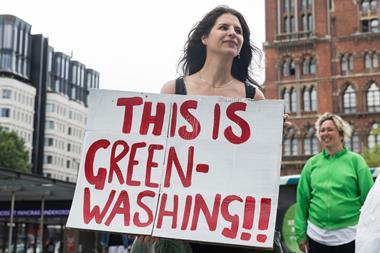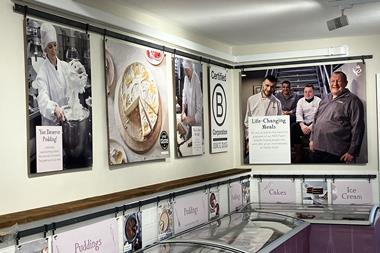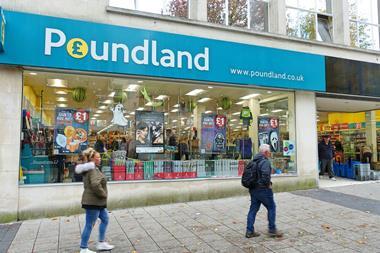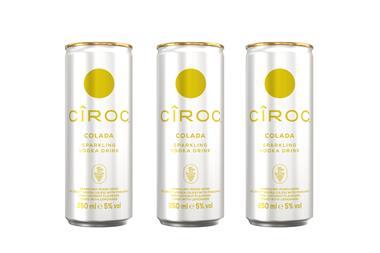The British food industry is steeling itself for a massive jump in food inflation in the wake of soaring animal feed prices, a shortage of silage and poor harvests.
Food prices could be at least 10% higher by early next year, economists and experts predicted this week as cost hikes in animal feed the first link in the food chain sent shockwaves through the industry.
BOCM Pauls, the UK's biggest animal feed supplier, reported a 20% increase in the price of raw material feed on last year, following a 30% spike in feed wheat costs. Selling prices to dairy, poultry, beef and pig farmers would have to increase by the same amount over the next three months, it warned.
The dry weather has heaped further misery on farmers by decimating yields of silage for winter feed by up to 50%, said the NFU. This is likely to reverse current deflationary trends in meat pricing beef prices have fallen 2.3% in the past year and chicken prices 5.2%.
Food producers are already reeling from the soaring cost of commodities such as palm oil, cocoa and soya oil, which have leapt 39%, 23% and 14% respectively since last year [Mintec].
As The Grocer went to press, commodity experts from Russia the world's third-biggest wheat supplier announced that the country's wheat exports could plummet by almost 50% because of a drought.
The news sparked fears of a Russian export ban, which would have "massive impact" on UK food inflation, said economists.
"We expect to see an acceleration of food prices and a return to double-digit increases by early next year if the situation doesn't change," said Tom Vosa, chief economist for the Clydesdale and Yorkshire Banks.
Will Hayllar, partner at financial analysts OC&C, said British consumers could expect a lag time of around six months before input hikes fed through to retail prices.
The poultry industry was "not in a position to absorb these increases", said British Poultry Council CEO Peter Bradnock.
A spokesman for Findus said the high prices "could lead to inflation in food prices as we've seen previously in the market peaks of 2007 and 2008".
The multiples insisted they would work with suppliers to mitigate the cost rises and limit price rises on shelf. But, warned Chris Etherington, CEO of wholesaler P&H, retail price rises could just be the tip of the iceberg.
There was a danger of repercussions in the wider economy, he said. "I think this could be the beginning of the double-dip recession. This is really scary stuff."
Price Pressure: How key commodities stand this week (year-on-year)
Rice: -18%
At the moment, rice is cheaper than a year ago, but it could follow the precedent set by wheat, warned Jon Calland of Tilda. "Rice is a neurotic sector bad news in commodities can cause shockwaves."
Palm oil: +39%
Following a big dip in price a year ago, palm oil has tracked rising crude oil prices. The USDA forecasts rising output in 2010/11 but there continues to be a fine line between supply and demand.
Cocoa beans: +23%
In purchasing 7% of the world's crop of cocoa, commodities trader Anthony Ward helped drive cocoa prices on the London market to a 30-year high two weeks ago, gaining the nickname 'Chocfinger'.
Soya oil: +14%
Compared with palm oil, soya oil saw less of a dip this time last year so its annual increase is less. Brazil's export supplies are tightening due to strong demand from its domestic biodiesel production.
Food prices could be at least 10% higher by early next year, economists and experts predicted this week as cost hikes in animal feed the first link in the food chain sent shockwaves through the industry.
BOCM Pauls, the UK's biggest animal feed supplier, reported a 20% increase in the price of raw material feed on last year, following a 30% spike in feed wheat costs. Selling prices to dairy, poultry, beef and pig farmers would have to increase by the same amount over the next three months, it warned.
The dry weather has heaped further misery on farmers by decimating yields of silage for winter feed by up to 50%, said the NFU. This is likely to reverse current deflationary trends in meat pricing beef prices have fallen 2.3% in the past year and chicken prices 5.2%.
Food producers are already reeling from the soaring cost of commodities such as palm oil, cocoa and soya oil, which have leapt 39%, 23% and 14% respectively since last year [Mintec].
As The Grocer went to press, commodity experts from Russia the world's third-biggest wheat supplier announced that the country's wheat exports could plummet by almost 50% because of a drought.
The news sparked fears of a Russian export ban, which would have "massive impact" on UK food inflation, said economists.
"We expect to see an acceleration of food prices and a return to double-digit increases by early next year if the situation doesn't change," said Tom Vosa, chief economist for the Clydesdale and Yorkshire Banks.
Will Hayllar, partner at financial analysts OC&C, said British consumers could expect a lag time of around six months before input hikes fed through to retail prices.
The poultry industry was "not in a position to absorb these increases", said British Poultry Council CEO Peter Bradnock.
A spokesman for Findus said the high prices "could lead to inflation in food prices as we've seen previously in the market peaks of 2007 and 2008".
The multiples insisted they would work with suppliers to mitigate the cost rises and limit price rises on shelf. But, warned Chris Etherington, CEO of wholesaler P&H, retail price rises could just be the tip of the iceberg.
There was a danger of repercussions in the wider economy, he said. "I think this could be the beginning of the double-dip recession. This is really scary stuff."
Price Pressure: How key commodities stand this week (year-on-year)
Rice: -18%
At the moment, rice is cheaper than a year ago, but it could follow the precedent set by wheat, warned Jon Calland of Tilda. "Rice is a neurotic sector bad news in commodities can cause shockwaves."
Palm oil: +39%
Following a big dip in price a year ago, palm oil has tracked rising crude oil prices. The USDA forecasts rising output in 2010/11 but there continues to be a fine line between supply and demand.
Cocoa beans: +23%
In purchasing 7% of the world's crop of cocoa, commodities trader Anthony Ward helped drive cocoa prices on the London market to a 30-year high two weeks ago, gaining the nickname 'Chocfinger'.
Soya oil: +14%
Compared with palm oil, soya oil saw less of a dip this time last year so its annual increase is less. Brazil's export supplies are tightening due to strong demand from its domestic biodiesel production.


















No comments yet